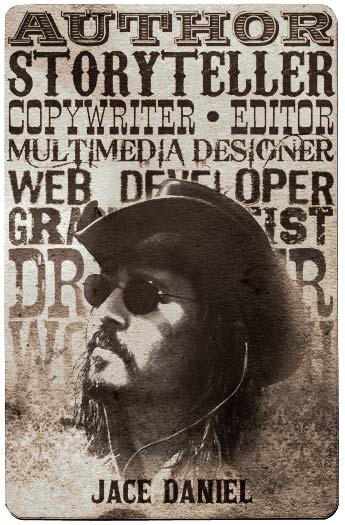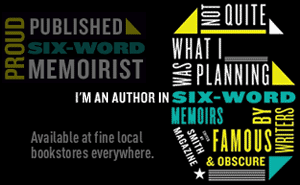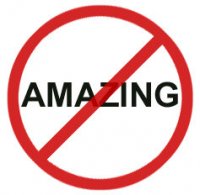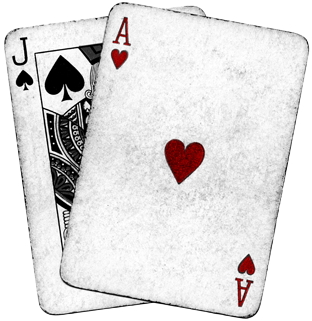At last.
I felt like a kid on Christmas afternoon who suddenly realized that the exciting wait was over, the presents had been opened, and the only thing to do now is to try to enjoy what Santa brought me. Although I did get the bike I’d been wishing for, it wasn’t quite the color I thought I was expecting. Whether I’d end up liking the color or not would be a test of time. “Maybe I will,” I thought.
After letting things settle in my cortex for a few days, things have started to stick. Not unlike the unexpected color of the bike that I end up liking a week later, the point of Revolutions begins to make itself clear with time. While I expected (OK, hoped) that the “revelation” of the metaphor would be the End, it just so happens that it’s simply the Means. Revolutions, and the whole Matrix trilogy, revolves around a fundamental message containing more philosophical relevance than I was expecting. Like it or not, it left us with exactly what we need to hear.
To recap a bit, there has been much debate these past six months regarding where we’re going with all this Matrix business. The main question that has driven a wedge between Matrix fans is whether or not Zion and the rest of the “real world” are real at all, or if it’s simply an extension of the virtual reality which has been pulled over man’s eyes. An extension of the Matrix. This has been recognized as the “Matrix within a Matrix”, or “onion skin” theory, which grabs much different meaning from the movie than that of a literalist’s view. It’s natural to take things at face value, viewing the story as an epic sci-fi thriller depicting a war between biological man and the machines he’s created. Personally, I subscribe to a variation of the “Matrix within a Matrix” theory in which there are no biological humans in the story. All our heroes are part of what Morpheus in The Matrix describes as the “entire race of machines” that Artificial Intelligence spawned.
After Revolutionizing, I now realize that it doesn’t really matter. Our final destination in this trilogy is not simply realizing that everything is A.I., but rather addressing the deeper questions that arise if it is. Questions that apply to our own real existence as thinking creatures; questions about Choice, Purpose, Control, Power, Destiny, Fate, Free Will, Determinism, Truth, Reality, Hope, and Love. Questions that all of mankind shares yet offers various answers to, answers so fundamentally different that they have segmented our species into distinctly different cultures and creeds. Each of these segments revolve around a unique belief system designed to cope with these unanswerable questions.
There are many questions that the excessively-entertaining topic of Artificial Intelligence raises, namely “If a man-made machine were programmed to feel, is it any less human than us?” This ultimately encourages us to re-evaluate the reality of our own intelligence, since, when you think about it, something “artificial” can only be defined as such when compared to something that is “real”. But just what is “real” exactly? And who says so? These questions represent the true spirit of what The Matrix was in 1999, and now, four years and two sequels later, they still do. Some things never change.
Enough of the general stuff for a moment. Back to to The Matrix. The whole point of the trilogy can be summed up in one question:
DID THE FIVE PREVIOUS NEOS CHOOSE DOOR 1 OR DOOR 2?
I’ll explain later. First, the plot of The Matrix Revolutions:
To skip the plot, click here.
…………………………………………
(WARNING: SPOILERS)
We begin where Reloaded left us, onboard the Hammer ship, which has been searching for its sister ship, the Logos (run by Niobe and Ghost). Neo and Bane are each in a coma and being monitored by Maggie, who describes Bane’s neural signals to Trinity as “unusual, similar to that of a person jacked in to the Matrix.” There is voiced concern over sole-survivor Bane’s role in the destruction of the other ship, and he’s up for a serious interrogation if he ever pulls out of his coma. In the control room, Morpheus, as if he knows something, requests to the operator that another scan be done of the Matrix. A scan for Neo. Hmm…has Neo gone wireless on us? The phone then rings. It’s Seraph, the Oracle’s guardian, telling Morpheus that the Oracle instructed that he come at once. Morpheus and Trinity obediently jack in to visit the Oracle.
Neo awakens lying face up on the floor of an eerily quiet subway station. On the walls read MOBIL AVE. There to greet him out of (into?) his coma is a young Indian girl named Sati. She asks Neo if he’s lost, explaining that she’s waiting for the train to come and take her. The only other people in the train station are Sati’s father and mother, who introduce themselves as software programs. The father describes himself as a program related to the power plant, while his wife is a creative interactive software designer. The father, who Neo saw in the Merovingian’s restaurant in Reloaded, continues to explain to Neo that they are in a place “between the Matrix and the Machine World”, and that they are awaiting the train to take Sati back to the Matrix after convincing the Merovingian that she had a purpose. The train is run by the Trainman (i.e. An engineer. Get it?), who works for the Merovingian. As Sati’s father explains, a program is put here in limbo (i.e. An anagram for MOBIL. Get it?) if it tries to take something from the Matrix to the Machine World without permission. The train shows up, driven by the Trainman, who lets the Indian family on but forbids Neo from boarding. “So that’s what they wanted,” the Trainman says as he looks at Neo, telling him he can’t come because the Merovingian has forbidden it.
Morpheus and Trinity meet up with Seraph, who leads them to the Oracle’s apartment. There she is played by another actress, Mary Alice, who’s replaced the original Gloria Foster. Her new appearance is understandably confusing to Morpheus and Trinity, and she explains that her “new look” is a result of a choice that she had to make, a choice to help find Neo. She explains that Neo is being held in a place between the Matrix and the Machine World, and the only way for him to return is by the Trainman. Since the Trainman works for the Merovingian, Morpheus and Trinity, along with Seraph, must visit the Merovingian to negotiate the release of Neo. Crashing one of Merv’s raves, he offers them Neo in exchange for “the eyes of the Oracle”. Not happy with the terms, Trinity leads her partners in a scuffle which ends up in a gunpoint standoff with Merv’s men. Clearly willing to die for her love of Neo, the Merovingian realizes that he cannot bargain with her (i.e. Love conquers all. Get it?) and presumably authorizes Neo’s release. The three rescuers pick Neo up at the train station and begin their return to the hardline from which they will jack back out of the Matrix. Neo informs them that they must wait; he must visit the Oracle one last time. “I have to see her.”
Neo visits the Oracle in the apartment, inquiring what has happened to him, and why she didn’t inform him about everything. “Why didn’t you tell me about my predecessors? Why didn’t you tell me about the Architect? How did I get in the Matrix without jacking in? How did I stop the squiddies with my will?” She answers that “the power of the One leads back to the Source”, and that she, like Neo, has her own choices to make, claiming that these choices necessarily unbalance the equation inherent to the programming of the Matrix (i.e. Architect: “Your life is the sum of a remainder of an unbalanced equation inherent to the Matrix.” Remember?). She explains that the Architects’s purpose is to “balance the equation”, while her purpose is to unbalance it. The Oracle tells Neo that Smith is spreading throughout the Matrix and is on his way here, eventually taking over the entire Matrix as well as the Machine World beyond it. She tells Neo that “Smith is you. He is your opposite. Your negative. The result of the equation trying to balance itself out.”
And so it is. A group of Smiths come to the Oracle’s apartment building, and after taking over Sati and Seraph (yes, Sati and Seraph become Smiths), enter the Oracle’s apartment to add her to his arsenal. Smith puddings the Oracle, taking over her identity, and is visibly ecstatic at his newfound “vision” and abilities (i.e. He now has the “eyes of the Oracle.” Get it?). Smith has cracked into the database and is taking the entire Matrix world over. Meanwhile, on the Hammer (which has meanwhile located and regrouped with the Logos), it’s not surprising that they’re noticing warped Matrix code on their monitors.
Now jacked out of the Matrix, and after pondering his meeting with the Oracle for a few hours, Neo informs the rest of the crew that he now knows what he has to do. He has to take one of the ships to the Machine City. This is considered a suicide mission by the Hammer captain, who immediately forbids it. Niobe offers Neo her ship, stating that she doesn’t believe in the One, but she “believes in Neo”. Meanwhile, Bane has killed Maggie, and is presumably hiding somewhere on ship unbeknownst to anybody else. Morpheus struggles to believe in Neo, stating “I can only hope you know what you’re doing.” Neo can relate. “Me too.”
The two ships part ways, with Neo and Trinity on the Logos. Guess what? Bane is stowing away. Without getting into too much detail, there’s a face off with Neo and Bane/Smith, with Neo ultimately prevailing. In the struggle, however, he’s blinded by a ray gun (don’t worry, the One doesn’t need eyes to see). Unsighted, but not undetermined, Neo continues with Trinity at the wheel to go to the Machine City at the end of the power lines. They encounter quite a bit of squid-induced turbulence, getting to the Source in crashing fashion.
In Zion, the machines have been drilling and are just outside the gates. There are plans to hold a particular dock, which is a relatively small area in which all the squids would be concentrated before gaining critical access to the temple city. Firing up the APUs and recruiting women and underaged kids for infantry duty, the people of Zion, including a love-driven and determined Zee (Link’s girl), take up arms to hold up the fort from the inevitable machine attack. The main goal of Zion is to get a working ship back to the gate in order to utilize its EMP for defense.
In the crashed Logos, Neo is OK. Trinity, however, is, well, I won’t say anything. Let’s just say that Neo’s final task as the One is to walk out of the ship, meet up with the Machine City’s leader, and make a plea for peace. He warns the Machine City leader that “the Smith program has spread, threatening to take over the entire Matrix, as well as the Machine World. Only I can stop him.” Apparently concerned, and presumably agreeing to the deal of World Peace for Smith-riddance, the Machine City leader jacks Neo into the Matrix to meet Smith in what will be their final face-off.
Hundreds of Smiths face Neo in a rainy Matrix, fronted by a particular Smith who is now apparently the Oracle (i.e. Neo: “It ends tonight.” Smith: “I know. I’ve seen it.”) They exchange a healthy dose of fists and words, with Smith revealing to Neo that “Your life taught me the purpose of all life – to end.” In an exhausting and seemingly unending battle, with Neo visibly defeated, Neo gets back to his feet again, asking for more. This disturbs and confuses Smith. “Why do it, Mr. Anderson? Why get up? What’s the point? Is it freedom? Truth? Peace? Love? These are human illusions! It’s pointless to fight me! Why do you do it?”
Neo replies, in thematic style, “Because I choose to.”
Smith, gradually losing the battle of words, begins to remember something. “Wait! I’ve seen this before. You were lying there, and I was standing here, just like now. And I was supposed to say something. ‘Everything that has a beginning has an end, Neo.'” Neo, knowing what he must do, surrenders to Smith, who puddings Neo and takes him over. Neo becomes Smith, who quickly explodes in a ball of light, as do all the other Smiths. Are we done yet?
Back in the Machine City, the leader declares “It is done.” Neo’s body lies there in the Machine City, presumably dead. Back in Zion, the squids all uncharacteristically stop attacking, and head back home. Zion, realizing the long war is finally over, rejoices. Morpheus, in a state of reluctant disbelief, is beside himself. “He did it. Is this real? Thank you, Neo.”
The final scene shows us the last moments of the destroyed Matrix healing itself as a cat walks by in reminiscent deja-vu fashion, waking the body of Sati up to greet the morning.
The Architect greets the Oracle in a park, asking her, “How long do you think this peace will last?”
The Oracle replies, “As long as it can. What about the others?”
“They will be free,” he answers.
“Do I have your word?” she asks.
He replies, “What do you think I am? Human?”
Seraph and Sati walk up to the Oracle together. Sati has made a rainbow, declaring it to be for Neo. She asks the Oracle, “Will we ever see Neo again?”
The Oracle replies, “I suspect so.”
Seraph asks, “Did you always know?”
The Oracle replies, “Know? No. I believed.”
………………………………………
Some quick notes,
There were a few cool new techno-metaphors, including the Oracle’s “shell”, the train’s “routing engineer”, and plenty of cookies. The special effects, well, do you need to ask? I must say I noticed the gaping hole left by our original Oracle, actress Gloria Foster, who unfortunately died before completing her scenes for Revolutions. They did the best they could do working around the new Oracle’s identity, but it really wasn’t the same as it would’ve been with Foster. 
So where are we now? What’s going on? What happened? Let’s go back to the question that the trilogy asks us,
DID THE FIVE PREVIOUS NEOS CHOOSE DOOR 1 OR DOOR 2?
What is manifested in this sentence is the same question that has plagued man since Day 1. If you can answer this, you have the answer to everything.
To review, Neo was given a choice of two doors, each with their own conditions. Let’s consider the doors and the implications of the two choices once more.
Door 1 would lead to a destruction of Zion, but would allow Neo to salvage the human race by selectively taking 23 people, 7 men and 16 women, out of the Matrix pods in order to repopulate Zion.
Door 2 would lead to both a destruction of Zion as well as a cataclysmic system crash which would kill everybody in the Matrix. Put them together and you have an extinction of the entire human race.
Which brings us to the epicenter of our debate. I do not see the previous five Neos voluntarily choosing to exterminate Zion, no matter what the “truly logical” alternative of Door 1 offered. Can we really believe that the previous Neos, visibly defiant in the Architect’s monitors, would voluntarily kill women, children, and Morpheus? That is what choosing Door 1 would entail.
Some may guess that Neo 6 chose Door 2, breaking the pattern of the previous five who Chose Door 1, hence truly changing the outcome of things. I say Neo 6 “chose” Door 2 by design, the same way the five predecessors did. The truth is they have no choice other than the choice they’ve been programmed to believe they’ve made.
As the Architect says,
“Your five predecessors were by design based on a similar predication, a contingent affirmation that was meant to create a profound attachment to the rest of your species, facilitating the function of the one.”
When he says “by design”, he means “by the way humans are designed”, which is a design that the Architect, a perfectly logical intelligence, cannot relate to. He does, however, realize its value in “facilitating the function of the one”. In other words, if Neo (or humans) didn’t inherently care about their own kind, then it would be impossible for one of them to step up to the plate and be a hero. And being a hero means making illogical decisions; decisions which are against the odds.
The issue regarding the previous Neos’ choices regarding the two doors addresses a question which will be argued forever. Not unlike our real-world question about the existence of Free Will.
So has anything changed? Or is it all a loop, repeating itself?
Although there have been fluctuations in the six revolutions, nothing really has changed at all. What we’ve seen with Revs is not only a sequel to the sixth reload, but a prequel to the seventh. Like any loop, it ends at the beginning.
What’s Choice got to do with it?
We know that not every person in the Matrix is aware of the true reality. But the fact that they have all been given the necessary element of Choice gives them the *potential* to exercise their ability to choose, question their reality, and ultimately reject the Matrix. As the Architect stated in Reloaded, 99.9% of the population would blindly accept the reality imposed upon them, not realizing their power to reject it. The true threat to the Matrix is the other .1% of the population, or the anomaly. Think of this .1% of the population as the exceptional minds – representing the ultimate expression of human brilliance. A Mensa of sorts, constituted by roughly one in a thousand people.
The first Matrix failed because the Architect, a perfect intelligence unaffected by illogical emotion, failed to take into account the “lesser” human mind. He therefore required a solution in order to make the Matrix work, yet his perfect mind was incapable of coming up with such a solution, or even comprehending the problem. As he says,
“…the answer was stumbled upon by another, an intuitive program, initially created to investigate certain aspects of the human psyche.”
After seeing Revs, we can pretty much assume he’s talking about the Oracle here. This “intuitive program” specializing in “investigating the human psyche” would likely be a program in a suite of programs, all designed to simulate human intelligence. Artificial Intelligence.
The Architect continues,
“…she stumbled upon a solution whereby nearly 99.9% of all test subjects accepted the program, as long as they were given a choice, even if they were only aware of the choice at a near unconscious level. While this answer functioned, it was obviously fundamentally flawed, thus creating the otherwise contradictory systemic anomaly, that if left unchecked might threaten the system itself.”
The obvious fundamental flaw he speaks of is the necessary element of Choice, which could potentially result in the same type of monumental failure as the first Matrix. However, it just so happens that the math works out where the flaw would only be expressed in a relatively small and controllable percent of the population.
The Architect continues,
“While it remains a burden to sedulously avoid it, it is not unexpected, and thus not beyond a measure of control. Which has led you, inexorably, here.”
This statement indicates that everything in the Matrix, including Tom Anderson’s decisions and choices, are not beyond the control of the higher power. While Tom may have thought he was controlling his own destiny, making his own decisions, and choosing his own path, the fact of the matter is that he had no choice at all. It was all part of a design.
Such is life.
For those expecting answers to the questions posed in M1 and Reloaded, I expect they’ll find The Matrix Revolutions eternally disappointing. It so happens that Life deals the same type of disappointment and frustration to those who seek definitive answers to our biggest questions. What the Wachowski brothers have delivered here is piece of storytelling which represents the human condition, which is simultaneously enlightening and disturbing.
If you were hoping that the final installment of our trilogy would be The Matrix Resolutions, keep in mind that Hope, as the Architect says, is the quintessential human delusion. The Answer is not the point of the story. The Question is. Being spoon-fed the Answer is not the point of Life, and a definitive Answer is not necessary for us as thinking creatures to find meaning in Life. Whether or not the meaning we create is part of our own illusion, we’ll never know. But does it make a difference? Remember, there is no spoon. So don’t expect to be fed by one.
So that said, when it comes down to it, I must say that I enjoyed Revolutions. I liked it. I always will.
Why?
Because I choose 2.









